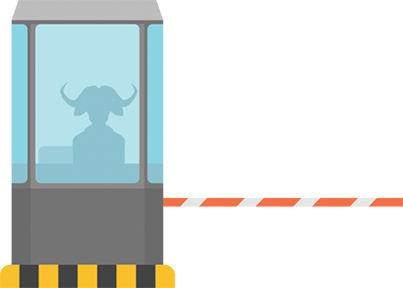Toll.
Is there another four-letter word that leads to a longer string of four-letter words from the mouths (and keyboards) of those employed in the trucking industry?
Google “toll poll” and you will find a lengthy list of links to articles reporting, for the most part, that drivers of all vehicles strongly oppose toll roads. Whether it’s turnpikes, with tolls that support dedicated projects, or the means to drive an otherwise inaccessible route (i.e., a bridge connecting the mainland to an island), the public overwhelmingly wants convenient traffic routes paid for by means other than tolls, even if the overall costs are the same.
Toll talk has been all the rage in several states as lawmakers position themselves in preparation for transportation bills, developing creative answers to the problem of the decreasing funds in the National Highway Trust Fund.
While tolls aren’t exactly a creative solution, they’re already in place in several states. Some states may consider increasing toll fees, expanding the roadways subject to tolls, or even beginning a toll program from scratch. Pennsylvania has increased its toll fees along the Pennsylvania Turnpike by 35%, and in Connecticut, Gov. Ned Lamont’s ever-changing toll proposal, which finally settled into a trucks-only toll at 12 bridges throughout the state, was set for a legislative vote in early February.
Report released just in time for lawmakers’ consideration
The American Transportation Research Institute (ATRI) released the findings of its most recent study on tolls, an issue the organization placed at the top of its list of research priorities for 2019. Based on 2018 data provided by 21 tolling systems (81.7% of U.S. toll collections), ATRI reported that motorists paid $14.7 billion in tolls throughout the country. The report also included data on how toll revenue is reinvested, how truck-toll revenue compares with road usage, and the expenses involved in operating toll systems. The results of the 2019 study should be considered along with a 2017 ATRI study that concluded tolling to be the least effective method of funding national highways among the six methods studied.
Major findings of the 2019 study include:
- The 21 tolling systems studied represent 80% of the estimated $18 billion of tolls paid in the U.S.
- Approximately 6,000 miles of the nation’s roadways are tolled, resulting in collections of $3 million per mile; comparatively, 220,000 miles of roadway in the National Highway System receive funding primarily from fuel taxes, equating to collections of $159,091 per mile.
- Toll revenues have increased more than 72% since 2008, far exceeding the inflation rate (16.9%) over the same period.
- Except for driver wages, tolls represent the highest cost per mile of any truck-associated expense (45 cents). Tolling far exceeds the cost per mile of fuel taxes (14.6 cents).
- In trucking, toll-road costs are inflationary; trucks paid $4.2 billion of total toll revenue collected (31%) and $811 million in fuel taxes associated with miles driven on the toll roads sampled.
- Toll-collection facilities costs consumed 32.4% of tolls revenue; approximately one-half of facilities costs covered actual toll collections.
- Of the total net toll receipts after deducting expenses ($7.1 billion), 48% was diverted to uses other than operating toll roads and bridges. Truck drivers and carriers paid 28.5% of net receipts.
- Since 2009, toll revenues have increased 72.5% for systems providing statistics on vehicle miles traveled (VMT). During the same period, VMT increased 2.4%. The result is toll revenue increases exceeding VMT increases by nearly 3,000%.
- Government agencies, such as those managing mass transit and nontolled roadways, received more than $3 billion (20.5%) of gross revenues. This transfer of funds occurred in nine of the 21 tolling systems sampled.
- Toll systems received subsidies of more than $1 billion from other agencies, 17.5% of which came from the federal-interest-rate subsidy, Build America Bonds.
- ATRI determined that 79% of trips made by trucks over toll roads involved “critical interstate commerce” transportation generating more than $3.3 billion in toll revenue.
Clearly, state governments make a lot of money from tolling, as do third-party collectors, which states may use to manage tolling systems. Likewise, private companies that manufacture and install tolling-system equipment see temporary profits during the construction and implementation phases of new toll facilities or expansions.
Given the statistics, one must ask, “Why do we have tolls, and where did these things come from?”
It takes some time and research to get answer, but the bottom line is that we can blame it all on oxen.
Toll-Road Origins
One reason people are accustomed to paying tolls could stem from short-term neurological changes leading to acceptance of the inevitable. Tolls are nothing new, and they were not invented in Pennsylvania, a fact the state’s highway authority may dispute. Tolls have been traced back 2,700 years when travelers on foot, horse, camel, or via other means paid tolls to cross property, whether a road existed or not. Landowners and others with authority to impose tolls first charged them in Asia and Arabia. Germany may have been the first to impose an “over-the-mountain” toll when the most convenient (or only) routes to cross mountain ranges were gated and travelers were ordered to pay before crossing.
Eventually, Great Britain implemented tolling. In fact, England’s imposing travel tolls could have been one reason that angry root peddlers left for the New World to build settlements like Plymouth, Jamestown, and St. Augustine in the early 17th century. No doubt, the Flat Earth Society charged tolls on ship captains for the privilege of sailing over the edge of the planet. And the Pennsylvania Turnpike Authority will likely be pleased to know that it was in their state that private investors established the first significant toll road in the country, charging travelers along the 62-mile route between Philadelphia and Lancaster.
For a century, after investors built the early Pennsylvania tollway, like-minded individuals and corporations made tolling a routine aspect of travel. State governments, for the most part, stayed out of the business. They preferred the “road-labor tax,” a revenue-raising method whereby male citizens could either devote a few days of labor a year helping with road upkeep or pay a fee. In New York, for example, males had to work on the roads three days a year or pay a one-dollar fine. As an alternative, they could pay a fee of 62.5 cents per day. The fact that three days at 62.5 cents per day exceeds the fine by 87.5 cents shouldn’t confuse matters. On the other hand, the fact that a state government set the fine and “opt-out” rates may have created enough mistrust that even today many Americans oppose all toll charges.
Westward, ho! (But please stop at the ticket window on your way out of town)
For Americans wishing to travel during the nation’s early years, and especially for those headed into the western wilderness, improved roads were important. After all, the narrow trails Native Americans had followed for centuries couldn’t handle the abuse of ox-drawn wagons. Likewise, the damage these large animals and wagons could impose on a muddy roadway could shut a route down until conditions improved or the owner could make repairs. The idea pro-tolling organizations promote in favor of charging tolls, especially to trucks, based on their belief that larger vehicles do more damage than smaller varieties, could have begun when oxen and other stock animals tore up roads in the 1790s. A wise man once said something to the effect of “The sins of the father are passed on to his sons.” A legislator at his side quickly added, “And the sons shall pay tolls to rectify them.”
Regardless of who collected tolls, early roads in the U.S. were not well maintained and were often impassable, although logic suggests a corporate entity needing to keep roads in good condition to remain viable would reinvest in its infrastructure. But it wasn’t these toll roads that invigorated early entrepreneurs to develop more; instead, it was the success of toll-bridge companies a decade earlier. In the late 18th century, states granted charters to 59 bridge-tolling companies. And they were profitable, sometimes offering investors dividends exceeding 10%. Success resulted from good materials, well-planned construction, a limited length of infrastructure to maintain, and travelers with no other alternative. While later travelers avoided tolls by taking alternate (and undoubtedly more primitive) routes, those needing to cross water usually found the savings in avoiding bridges far less than simply paying the toll.
The early toll roads in the Northeast took on the name “turnpikes,” a designation still in use more than two centuries later. Between 1800 and 1830, 946 corporations in the northeastern states were incorporated as turnpikes. In nine states, turnpikes totaled 27% of all corporations. Proudly leading the way was Pennsylvania, where 199 of 446 corporations, or 46%, were operating turnpikes. New York bested its neighbor in quantity, registering 339 turnpike corporations. Between 1830 and 1845, another 138 turnpike corporations were established in Pennsylvania, and 110 in New York.
The bubble soon burst as steamships and the railroad arrived. Turnpikes began to fall out of vogue. No longer maintained, those still seeing profits in land routes constructed “plank” roads, where travelers and wagons had a relatively smooth ride on top of crudely planed lumber. The plank roads rotted far faster than expected, however, and the 1,000 or so corporations operating them made little money.
Profit versus convenience
Turning a profit was not the only reason for toll roads. In the era when the roads were privately owned, stakeholders became investors. Farmers who needed a more efficient way to transport their products to market, politicians who promised well-maintained roads in return for votes, and shop owners in communities who relied on products being transported from afar were all in favor of maintained roads, and investors from each of these groups supported them. They realized toll roads were not likely to pay direct dividends on their investments; yet, the indirect benefits fed their families.
Eventually, new materials made roadways easier to maintain, and private corporations could no longer charge fees the public considered excessive. For decades to follow, toll roads disappeared from most of America. They always lurked in the shadows, however, and the motorized automobile pumped in a breath of new life.
With the 1916 Federal-Aid Road Act, the U.S. Congress included clauses that allowed states to charge tolls on roads not supported by the federal government, but prohibited tolls on roads receiving federal aid. In general, the reason for this prohibition stemmed from the Interstate Commerce Act: Tolls restricted the free flow of interstate commerce. Eleven years later, the Oldfield Act offered states an olive branch, allowing the use of federal funds to build toll bridges, provided operational costs were at the states’ expense. Still, for the typical highway, federal funds could not be utilized if states assessed a toll on users. State-funded toll roads, largely focused in the Northeastern U.S., once again became popular.
The feds offer states relief
When federal funding in the 1950s went to support construction of the interstate system, fuel and other “user-paid” taxes eliminated the need for toll roads, at least in the government’s opinion. Construction of new tollways essentially ceased. Eventually, under some conditions, interstate routes could be established as tollways; however, the tolls could not be the means for funding construction and were only allowed after completion of the road work.
Finally in 2012, more leeway was provided for tolling federally funded roadways, but only for newly constructed interstates or in efforts to expand lanes and decrease congestion. High-occupancy vehicle (HOV) lanes were also approved as tollways.
Tollways have changed a lot since the 18th century. Rather than literally passing through a “turnpike” with a toll both to access a road, automated cameras requiring limited personnel are used to collect tolls. While these systems are undoubtedly more efficient than manned toll booths, implementation costs are much higher. South Carolina, for example, rejected efforts to charge tolls on Interstate 95, largely due to the $3.5 billion implementation costs.
As years pass, many states will propose to institute or expand tolls on highway, bridges, tunnels, and other travelways, and when a state can be sure the burden will largely fall on out-of-state vehicles, a few initiatives may be approved.
But rest easy, truck drivers and carriers, because if public-opinion polls are any indication, you have tens of millions of voters on your side. And the voting public, for the most part, realizes that any cost placed on the transportation of products soon shows up in the price tags staring at them on the shelves of their favorite retailers. Of course, the extra sales tax collected from increased prices could be considered “triple taxation,” could it not?
Taking heed
The 21st-century trucking industry needs to take note, as the number of voters recognizing the relationship between truck tolls and consumer prices is in a constant state of change. Voters who believe repairing any perceived highway damage caused by trucks may someday outnumber those who place priority on lower prices at the checkout stand. At that point, support for tolls may swing.
When voters decide they dislike trucks more than increased price tags, one can expect more “trucks-only” tolling propositions like those already being fought in Rhode Island courts. And we can blame them all on our ancestors’ oxen tearing up muddy toll routes a couple of centuries back.
Since retiring from a career as an outdoor recreation professional from the State of Arkansas, Kris Rutherford has worked as a freelance writer and, with his wife, owns and publishes a small Northeast Texas newspaper, The Roxton Progress. Kris has worked as a ghostwriter and editor and has authored seven books of his own. He became interested in the trucking industry as a child in the 1970s when his family traveled the interstates twice a year between their home in Maine and their native Texas. He has been a classic country music enthusiast since the age of nine when he developed a special interest in trucking songs.













